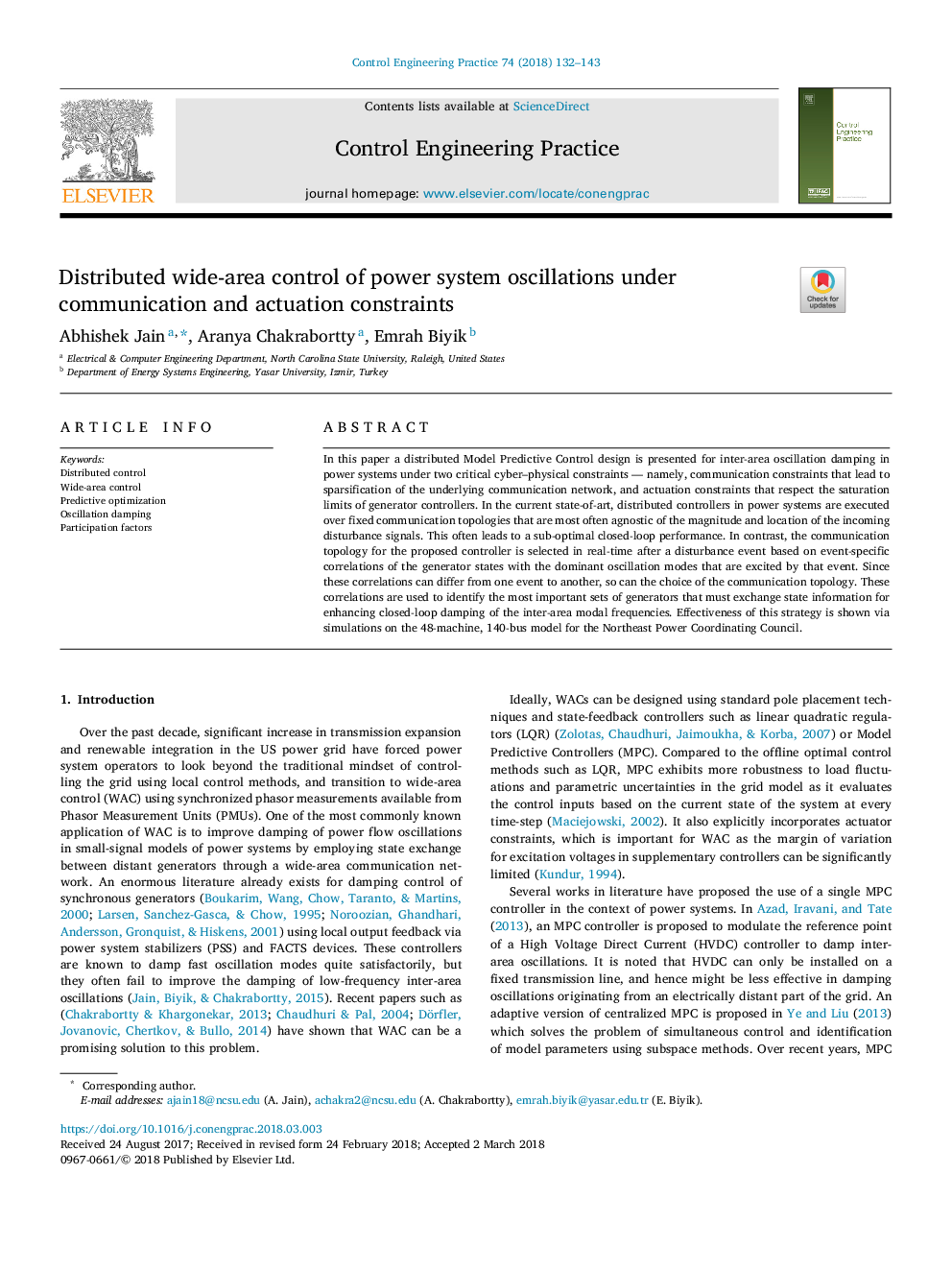| Article ID | Journal | Published Year | Pages | File Type |
|---|---|---|---|---|
| 7110340 | Control Engineering Practice | 2018 | 12 Pages |
Abstract
In this paper a distributed Model Predictive Control design is presented for inter-area oscillation damping in power systems under two critical cyber-physical constraints - namely, communication constraints that lead to sparsification of the underlying communication network, and actuation constraints that respect the saturation limits of generator controllers. In the current state-of-art, distributed controllers in power systems are executed over fixed communication topologies that are most often agnostic of the magnitude and location of the incoming disturbance signals. This often leads to a sub-optimal closed-loop performance. In contrast, the communication topology for the proposed controller is selected in real-time after a disturbance event based on event-specific correlations of the generator states with the dominant oscillation modes that are excited by that event. Since these correlations can differ from one event to another, so can the choice of the communication topology. These correlations are used to identify the most important sets of generators that must exchange state information for enhancing closed-loop damping of the inter-area modal frequencies. Effectiveness of this strategy is shown via simulations on the 48-machine, 140-bus model for the Northeast Power Coordinating Council.
Related Topics
Physical Sciences and Engineering
Engineering
Aerospace Engineering
Authors
Abhishek Jain, Aranya Chakrabortty, Emrah Biyik,
